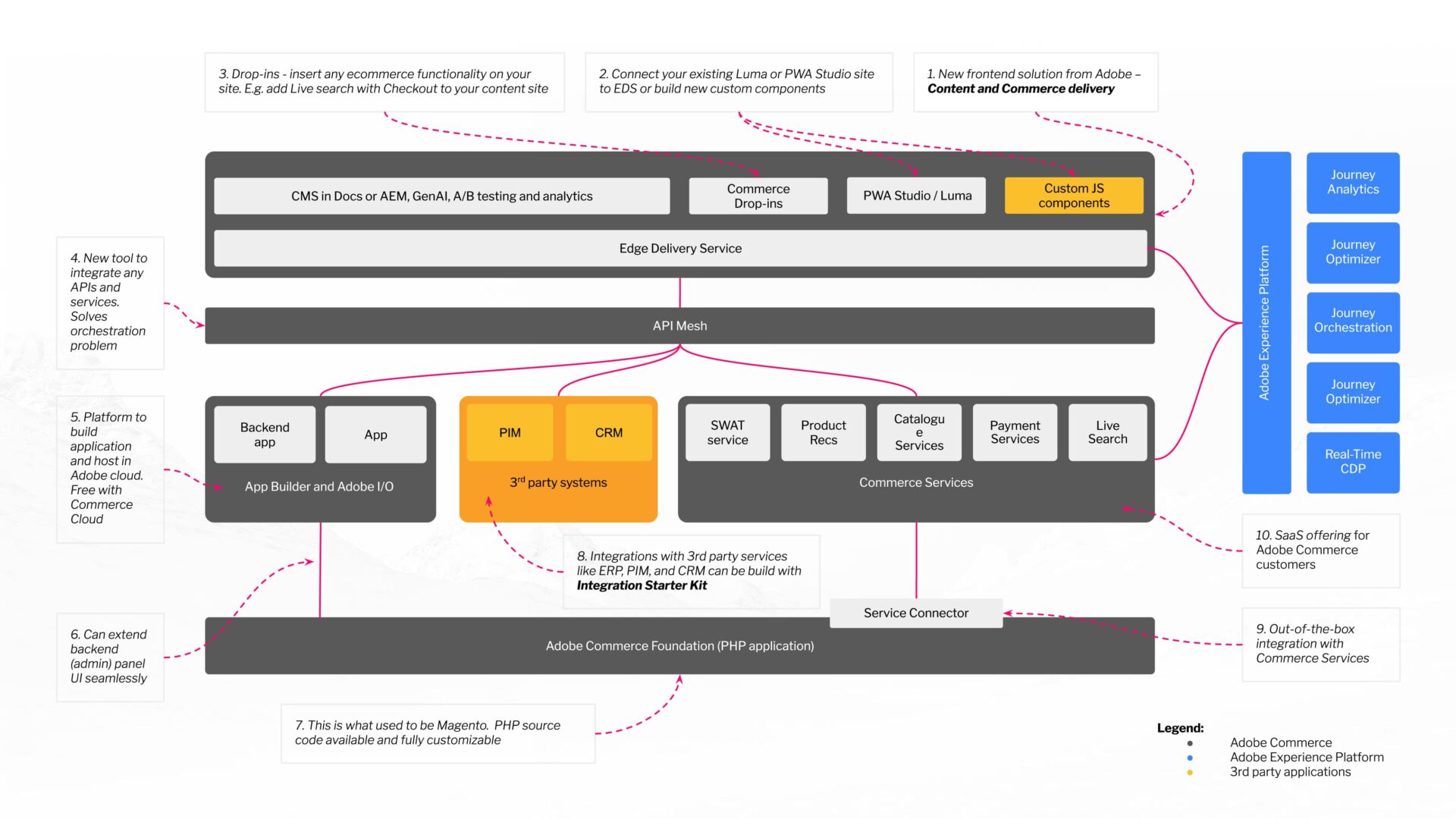Adobe Commerce product evolution
What began with Magento 1 as a classic, on-premise monolithic platform steadily evolved over the years to embrace the flexibility of the cloud, headless architecture, and now, composable. Each iteration—from the launch of Magento Cloud to the separation of front and backends with headless APIs—has reflected the shifting needs of online stores.
Today, Adobe Commerce’s focus is on modularity with composable commerce, empowering companies to build agile, scalable ecosystems with tools like Edge Delivery Services and App Builder. This evolution isn’t just about keeping up with trends; it’s about future-proofing commerce for whatever is around the corner.






